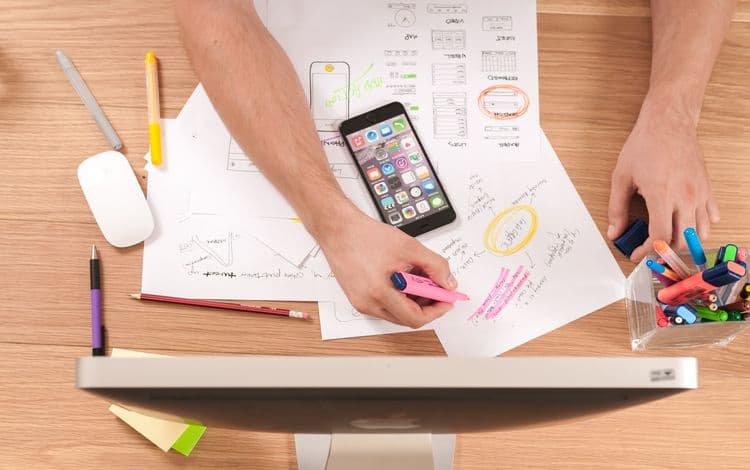Generally speaking, when preparing a balance sheet, it is going to follow one of two formats: when using a one-column format the assets will come first, followed by liabilities and then ultimately net worth. If using two columns to create a balance sheet, then assets get listed on the left-hand side with liabilities and net worth on the right.
The above balance sheet example utilizes a two-column method. In this article, we look closer at the various parts of the balance sheet in terms of understanding why a balance sheet is incredibly useful for any business regardless of industry or entity type.
Parts of a Balance Sheet
While fairly straightforward, it is important to understand the various sections that need to be incorporated into any balance sheet. As the name suggests, the point of a balance sheet is to ensure that everything balances out. Getting all relevant numbers and figures in there is key to arriving at a balanced result.
Current Assets
As noted, in this two-column format, the assets are on the left side. We start with current assets. What are the more commonly listed/used assets? You want to begin with those. So in the above balance sheet example, we can see that the two main current asset resources come from cash as well as accounts receivable. Cash will include both that which you have on hand and that which may be in your business bank account. And accounts receivable is money you are owed. Some others that may be included in a balance sheet could be prepaid expenses as well as inventory as this also represents part of a company's assets. Inventory in fact may comprise your biggest current asset—you want to list out the value of that inventory as far as what it would cost to replace it should it be damaged. Also keep in mind, that inventory will be both goods that are for sale along with the raw material required to make the goods sold.
Prepaid expenses are those products or services that you may not have received but that you've already paid for. For example, this could be the last month of rent as generally, you pay first and last when leasing office space. Insurance premiums could also fall into this category. Until they're consumed/used, prepaid expenses do count toward your assets. You will then add up all of the current assets and per the balance sheet example, list it out as "total current assets."
Fixed Assets
Versus current assets, a company's fixed assets are sometimes those that generate revenue. Not usually for sale, fixed assets fall under the long-term heading. That is not to say that fixed assets cannot be sold off—certainly, businesses sell equipment and real estate—however, they cannot be quickly converted to cash. Fixed assets will vary depending on several factors. If you're a newer and/or smaller business, you may not necessarily have many fixed assets.
Among some of the items included in the fixed asset portion of the balance sheet: vehicles, equipment, furniture, land, building improvements, among other such items. You will list out the value of a fixed asset as the original cost minus relevant depreciation. Depreciation is essentially how much the equipment etc. is devalued because of wear and tear.
When listing these assets, you will do so in terms of how quickly they can be turned to cash. It is also worth noting that the asset's value in total may be more than the original cost as this could potentially include shipping, installation, and any other associated expenses. There also may be a category labeled "other assets"; this would represent those assets that may not be tangible such as trademarks and patents for example.
Liabilities
Liabilities are the business's debts. So these can be claims of creditors, accounts payable, credit card debt, owed taxes, among other such liabilities. As with the assets, these are also usually broken into two categories: current and long term as you can see in the above balance sheet example. Most will list their liabilities in terms of when the money is owed. So accounts payable almost always gets listed first as those are generally due within thirty days or less. Some other things you will often find in this section include notes payable, taxes, accrued expenses (so wages for example/), and anything due to creditors.
Accounts payable represents the money you owe suppliers and creditors for products and services that you've received but haven't yet paid for with cash. Notes payable represents that which might be due on a loan for instance over the next year. There are also payroll taxes which signify that owed to an employee for work performed that has not yet been paid at the time the balance sheet is created. All liabilities will be listed in the order in which they need to be paid.
As far as your long term liabilities, here most often you are looking at that which needs to be repaid beyond just one year. So business loan financing for example would likely fall into this category depending on your agreed-upon repayment terms. This could also include money from others who initially gave the company start-up capital in the anticipation of eventual repayment.
Equity
The final section will include equity. This is calculated by figuring out what is left once you deduct liabilities from assets. It is comprised essentially of both owner's investment and retained earnings (that which the company has reinvested back into the business/).
First Union Lending has been working with small business owners across the US for years now. We believe in helping our clients thrive and grow. With short term loans, lines of credit, and merchant cash advances, among other products, we have the solution you need. All of our funding programs are custom-tailored to suit your specific business needs. No one size fits all approach with us. And some even get the money within a couple of days. Call today!
